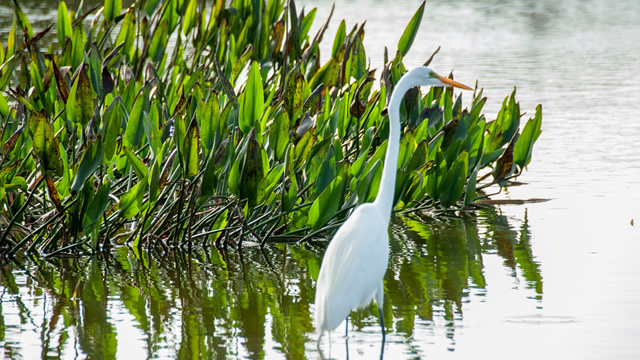The Course At Cypress Lake
With six set of tees, our golf course is suitable for golfers at any level.
The course is a fair test of a golfers skills and the practice area is waiting for you.
Walkers are also welcomed at the course.

The Course
7 Sets Of Tees
The course has seven sets of tees, and can be played from under 5,000 yards to just over 7,000 yards. Its water, sand and trees combine to provide challenge as well as subtle beauty. Still true to Dick Wilson’s original design, it boasts water on all but two holes. Balls cuddle into the best and hardiest of today’s new hybrids. The Celebration Bermuda grass fairways reward excellent shot placement and fast, undulating, Tiff Eagle greens challenge even the best short games. When new, it was ranked in the 200 toughest courses in the world; today, its rating and slope from the championship tees are 74.5/141. Casual golfers can enjoy its pleasures, while low-handicappers shake their heads and promise themselves “Next time….”
At One With Nature
 The Cypress Lake golf course is unusual among area golf courses in that it is set on a rectangular piece of land with no residential areas except on its external boundaries. While most members use carts, the layout makes it ideal for the golfer who enjoys walking. Wildlife find it an agreeable home site, and golfers share the course with great blue herons, egrets, ibis, an occasional alligator, several varieties of large turtles, our resident ospreys, and many other creatures that seem to understand that passing humans are no threat to them.
The Cypress Lake golf course is unusual among area golf courses in that it is set on a rectangular piece of land with no residential areas except on its external boundaries. While most members use carts, the layout makes it ideal for the golfer who enjoys walking. Wildlife find it an agreeable home site, and golfers share the course with great blue herons, egrets, ibis, an occasional alligator, several varieties of large turtles, our resident ospreys, and many other creatures that seem to understand that passing humans are no threat to them.
1959 Dick Wilson Design
The course was designed in 1959-1960 by Dick Wilson (1904-1965), a contemporary and respected rival of Robert Trent Jones, Sr. Many of Wilson’s major renovations and original designs are well-known today: New York’s Shinnecock Hills, Florida’s Seminole, Bay Hill in Orlando, the Blue Monster at Doral, La Costa (California), Cog Hill # 3 – Dubsdread in Chicago, Laurel Valley in Ligonier, Pennsylvania, and the Lakeside Course (now The Meadows) at The Greenbrier. His work is characterized by lakes, open fairways, and elevated greens slanted toward the fairways and defended by bunkers, so that the front of the green is open but an accurate shot is needed to reach the back.
Continuing Course Renovations
In 2001, the golf course was completely renovated under the direction of golf course architect Ron Garl, who restored many Dick Wilson’s original design elements, as well as adding unique ‘signature’ features of his own. The irrigation system was replaced and extended; 7,000 truckloads of fill were brought in to raise and recontour the fairways in order to improve the drainage. The driving range was substantially lengthened and widened; Tiff Eagle greens were grown in. The $2.7 million project converted an excellent golf course into an outstanding experience. The most recent enhancements to the course happened in the summer of 2025 with a complete bunker renovation using the “Bunker Solutions” system,repairs to all the lake banks that included adding stack rock features, along with several tee expansions for better playability and preservation of the Dick Wilson design.
Outstanding Practice Facilities
The club’s practice facilities are extensive. A large putting green prepares the golfer for the challenges of the course: it hasn’t a flat spot on it. The elevated pitching green can be attacked from both sides, or from the large adjoining sand trap. The range features small greens close in for short iron practice as well as the usual distant flags to measure prowess with the woods.
The club has approved for a complete renovation of the practice facility in the summer of 2026 that will elevate this area to one of the best in SWFL.
